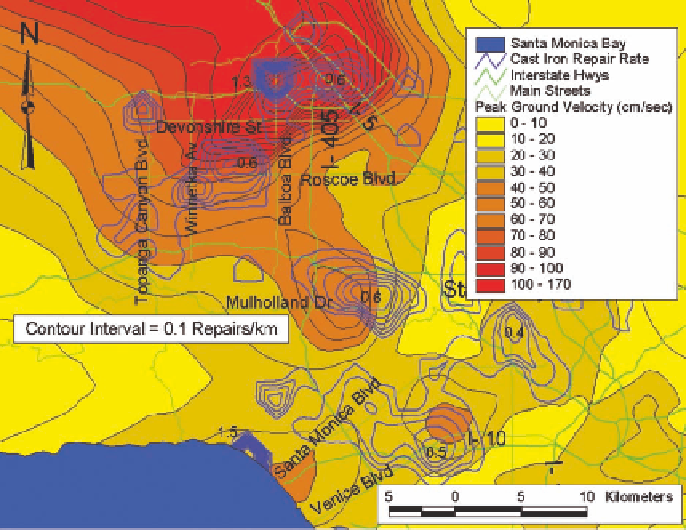Geoscience Reference
In-Depth Information
Fig. 17.7. Pipeline repair rate contours relative toNorthridge earthquake peak ground
velocity (O'Rourke and Toprak, 1997)
correlations were investigated for pipeline damage relative to spatially distributed peak
groundacceleration,spectralaccelerationandvelocity,AriasIntensity,ModifiedMercalli
Intensity(MMI),andotherindicesofseismicresponse.Bycorrelatingdamagewithvari-
ousseismicparameters,regressionsweredevelopedbetweenrepairrateandmeasuresof
seismic intensity.
The most statistically significant correlations for both distribution and trunk line repair
rates were found for PGV. Such correlations are important for loss estimation analyses
that are employed to assess the potential damage during future earthquake and develop
corrective measures and emergency response procedures to reduce the projected losses
(e.g., Whitman et al.,1997).
Figure17.8apresentsthelinearregressionthatwasdevelopedbetweenCIpipelinerepair
rates and PGV on the basis of data from the Northridge and other US earthquakes.
Figure 17.8b shows repair rate correlations for steel, CI, ductile iron (DI), and asbestos
cement (AC) distribution lines. The regressions indicate that the highest rate of damage
for a given PGV was experienced by steel pipelines. This result at first seems surprising
becausesteelpipelinesaresubstantiallymoreductilethanCIandACpipelines.Steeldis-
tributionpipelinesinLosAngeles,however,areusedtocarrythehighestwaterpressures

